One of the most hotly-debated topics in the electric bike industry is whether you should choose an e-bike with a torque or cadence sensor. In truth, there’s no correct answer.
Even though many riders prefer torque sensors, each type of sensor has distinct strengths and weaknesses. And although cheaper and less technologically sophisticated, cadence sensors are better suited to some riders.
In this article, we will explain how cadence and torque sensors work and explore the pros and cons of each to help you decide which type of e-bike is best for you.
How Do E-Bike Cadence Sensors Work?
Cadence sensors work in two ways; by measuring if the pedals are turning (like an on-off switch) and how fast they are turning. The sensor comprises a circular disc with magnets on it and a sensor that picks up the movement of the magnets.
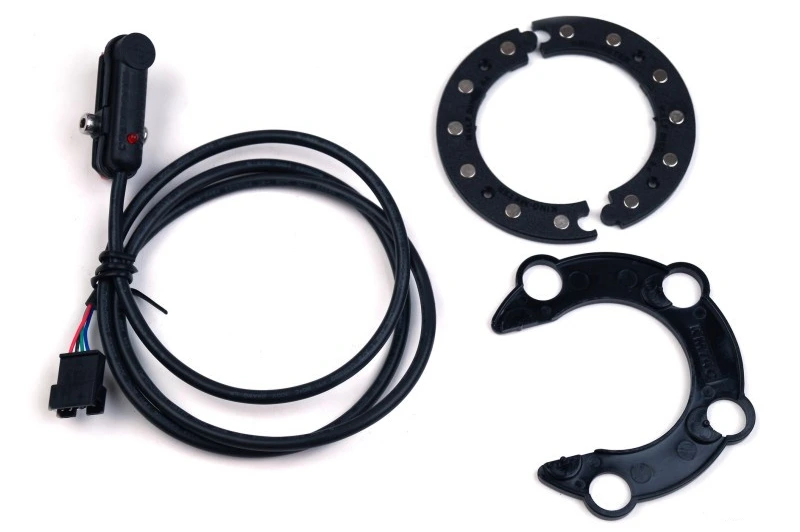
Responsive ebike cadence sensor with 12 magnets.
When you begin pedaling, the magnets rotate, passing the sensor. When the first few magnets pass it, the controller tells the motor to engage; when you stop pedaling, the magnets stop passing and the motor disengages. For this reason, there is usually a slight delay between activation and deactivation of assistance.
Primitive cadence sensors are like on-off switches, only measuring whether or not the cranks are turning. In these systems, power doesn’t fluctuate based on how fast you pedal.
The on-off nature means you immediately get the max power of the pedal assist (PAS) level you select, regardless of how quickly you pedal.
More advanced cadence sensing will also measure pedaling RPM (cadence). Power is then provided based on the assistance level selected and how fast you pedal. This demands that you pedal faster to reach the max speed of the PAS level chosen.
High-quality cadence sensors with more magnets are smoother and more responsive, closely replicating the performance of torque sensors.
A downside of cadence-sensing is that it can lead to sudden accelerations that may cause you to lose control, especially if you forget to switch to a lower PAS level.
Additionally, on cadence-sensing e-bikes, each PAS level is capped to a certain speed, so you may find the jumps between levels are large, stopping you from finding the perfect riding speed.
For example, the top speed on PAS 1 might be 8 mph and 12 mph on PAS 2, which is a 50% increase. Some e-bikes allow you to program the individual levels or add more PAS modes to avoid this issue.
Overall, cadence sensors provide a more exciting and relaxed ride as the motor does more of the work, but the downsides outweigh the positives for many riders.
Pros and Cons of Cadence Sensors
Pros
|
Cons
|
How Do E-Bike Torque Sensors Work?
Torque sensors work by measuring your force input. These devices vary in their design and where they measure. Some are installed at the rear dropout, others at the bottom bracket or on the chainring or cogs.
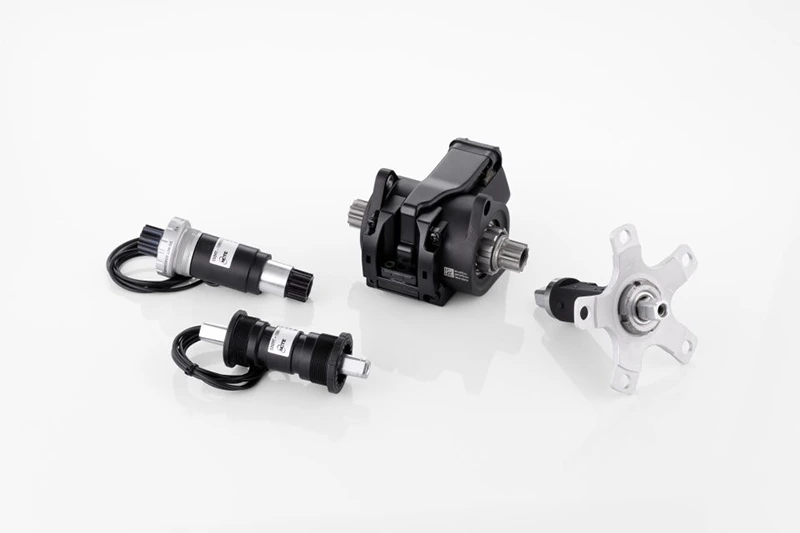
Ebike torque sensors are more sophisticated and offer a more responsive ride experience.
A torque sensor precisely measures the rider input and communicates with the controller, which tells the motor how much power to deliver.
The assistance is proportional to your input and changes dynamically in response to changes in the force you apply to the pedals and the chosen pedal assist level. You must push harder or shift up a PAS level to go faster.
The most advanced torque sensors measure input roughly 1,000 times per second, allowing micro-adjustments that result in an unbeatably smooth power transfer.
Because torque-sensing systems increase your power proportionally instead of providing a predetermined amount, you feel more connected to the bike. The natural ride quality is usually favored by cyclists who begin riding electric bikes for the first time.
This sensing method is also more energy-efficient, mostly because torque sensors require more input from the rider. In addition, they deliver smooth and consistent assistance that doesn’t surge or lag and waste energy.
The requirement to pedal harder to increase power from the motor means torque-sensing e-bikes require a little more effort on the part of the rider. If the gearing range isn’t low enough, this can be more strenuous when climbing.
Pros and Cons of Torque Sensors
Pros
|
Cons
|
Advantages of Having Both a Torque and Cadence Sensor
Many e-bikes that have a torque sensor also have a cadence sensor. With a torque sensor alone, there would be a significant delay between starting to pedal and the engagement of the motor. This is because the controller needs to make a reading of the torque the rider is producing and calculate how much assistance to deliver.
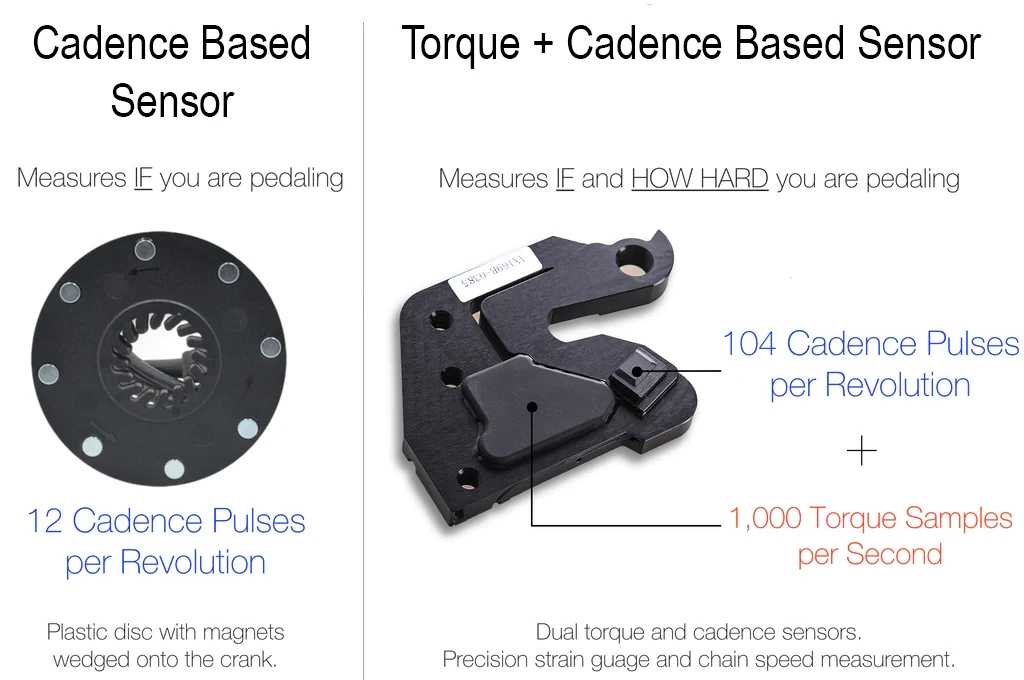
A lot of higher-quality ebikes come with both torque and cadence sensors, which bring the best of both worlds.
Using a more responsive cadence sensor, the motor will engage immediately based on the pedals beginning to turn, providing some assistance. Then, the controller will receive the information from the torque sensor and deliver a proportional amount of power, resulting in a smoother pedaling experience.
Precautions When Riding With Cadence Sensors
As mentioned, primitive cadence-sensing systems have some notable disadvantages, the most dangerous of which is aggressive acceleration. The on-off switch activation and preset power output of each PAS level mean you get full acceleration immediately.
For example, suppose you’re riding in PAS level 5 at 28 mph and you come to a stop at a junction. While stopped, if you forget to switch to a low PAS level and begin pedaling again, the bike will provide the maximum amount of torque to get you back to the top speed again.
The sudden acceleration makes it easy to lose control of the bike, crashing into other traffic or falling, potentially with a heavy e-bike landing on top of you. This isn’t an issue on torque-sensing e-bikes, as you will naturally start to pedal with minimal input and build up gradually.
Another potentially dangerous situation is when you’re trying to ride very slowly with lots of control—for example, trying to squeeze through a tight space. If you forget to lower your PAS level and you turn the pedals slightly to creep forward, the bike will instead surge forward as the motor will instantly give you maximum power, which could lead to a crash.
Torque vs. Cadence Sensors for Exercising: Which Is Better?
Torque-sensing electric bikes require constant input from the rider in order to engage the motor and move.
Like cadence-sensing e-bikes, you can choose the level of assistance provided, but this acts as a multiplier of the power you give instead of delivering power solely based on the turning of the cranks.
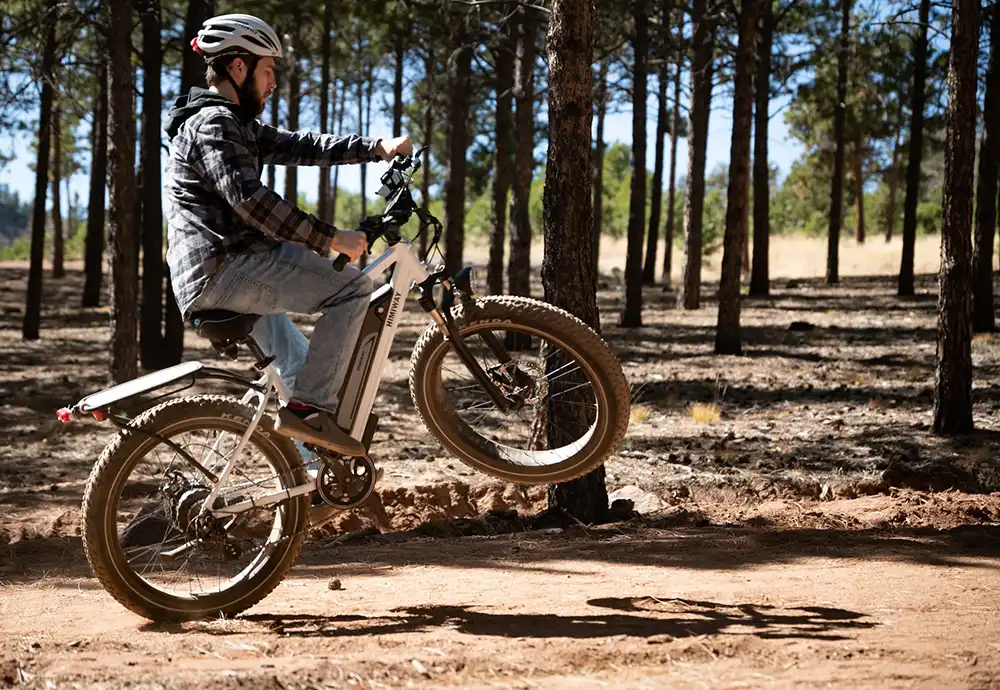
Electric bikes with torque sensors are a much better choice for exercising because they let you choose how hard you want to work.
As a result, you use more energy when riding, especially in the lower assistance levels, where the motor may only add 50% of your input.
In contrast, when riding a cadence-sensing e-bike on a high assistance level, you can move with virtually no effort as long as you keep the pedals turning.
One way to get a workout on cadence-sensing e-bikes is to choose a PAS level, get moving at the max speed of that level, and continue pedaling to reach speeds above that limit, where the motor stops assisting.
For example, if PAS level 2 tops out at 12 mph, you can continue to pedal to reach 15 mph, gaining speed without assistance. However, this isn’t intuitive or comfortable.
Given this difference, torque sensors are the best choice if you want to get a workout and enjoy the natural ride feel similar to a traditional bike. You can control how much energy you want to expend by choosing the assistance level, but you must use a minimum level of effort at all times.
Torque vs. Cadence E-Bike Sensors: Final Takeaways
In conclusion, the choice between a torque sensor and a cadence sensor for your e-bike depends largely on your riding style, budget, and preferences.
Cadence sensors, while less sophisticated and more prone to sudden accelerations, are cheaper and provide a more relaxed ride, making them suitable for those who want the motor to do most of the work.
On the other hand, torque sensors offer a natural, smooth ride, more exercise, better battery range, and precise control over your speed. That makes them ideal for traditional cyclists transitioning to e-bikes or riders who prefer a more active experience.
If budget allows, many modern e-bikes incorporate both sensors for a superior and more responsive riding experience. Whichever sensor you opt for, it’s essential to remember the unique characteristics of each to ensure safe, efficient, and enjoyable rides.
Read Next
Electric Bikes with Throttle: 9 Best Throttle-Controlled E-Bikes
E-Bike Modes Explained: Throttle vs. Pedal-Assist E-Bikes
How Do Electric Bikes Work? Here Are 14 Things You Need to Know
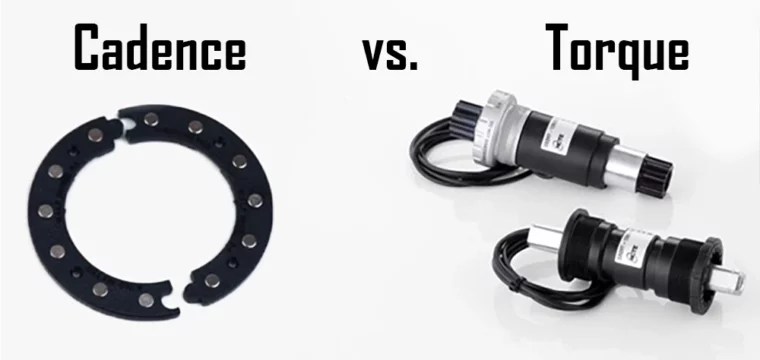
Your Feedback is Important!